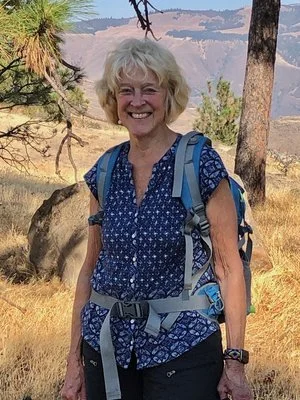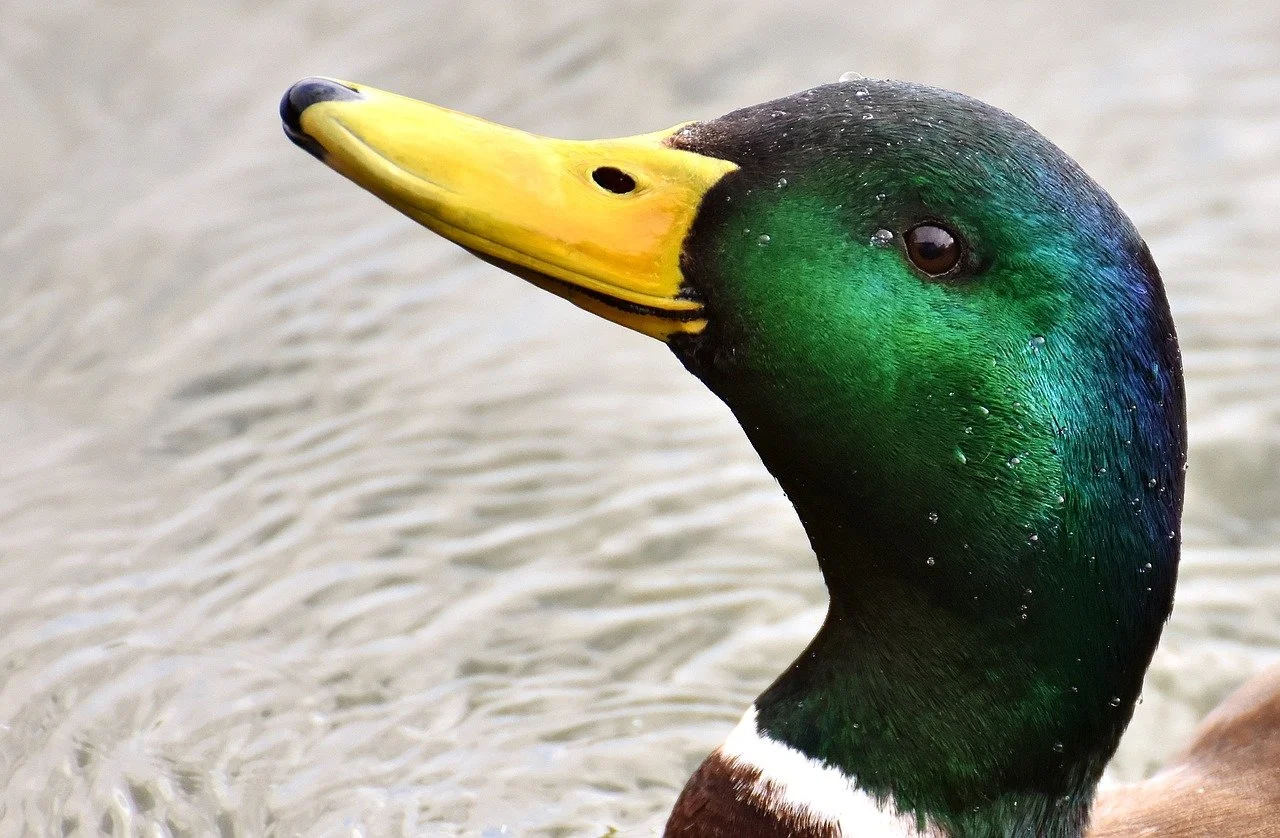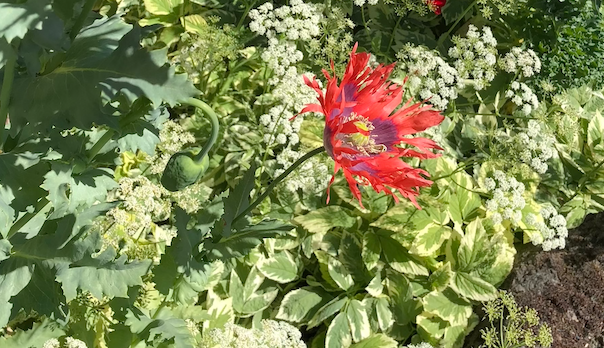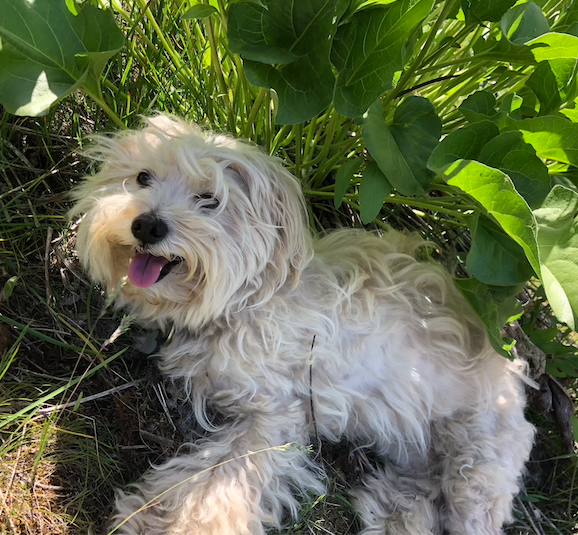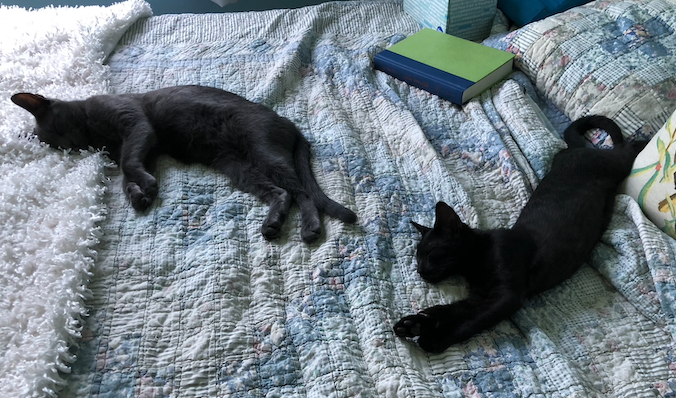Column: How does your garden grow?
By Nancy Turner
Bringing variety from the garden of life, our Nancy Turner
How old were you when you first realized gardening was a thing, an activity people did?
As a toddler, did you see your parents doing yard work and you just thought they were playing in the dirt?
I have no recollection of my early thoughts about gardening. What I remember is mostly sensory. I loved smelling the roses, pulling the soft petals off and placing them across my fisted hand, then smacking it with the palm of the other hand to make a loud pop. This was in the era of fart jokes. Putting a dandelion flower under one’s chin would tell you if you liked butter or not. Dandelion seed clusters were for making a wish, then blowing the seeds skyward. Somehow, a seed would float away and bring about my wish. If only one of my wishes had come true, I could have started a cult based on this manipulation of reality. The dandelion made it happen. My problem was that I never remembered what I'd wished for.
The Tender Start
Around the age of ten, my mother hired me to pull weeds in the flower garden that surrounded a large flat lawn. In the spring when the ground was still wet, she showed me how to use a trowel to dislodge roots. She also pointed out the difference between a “save it” flower and a “get rid of it” weed. I wasn't bribed or badgered into doing this. I was rewarded with cash, my first introduction to capitalism. I was not paid by the hour but rather paid a few pennies per plant. So my lollygagging didn't matter. My progress was marked by the pile of weeds tossed onto the burlap carrier. This wasn't forced child labor, it was an education. I learned which plants my mother liked, and I learned to appreciate the cash I ended up with. Those were the days of five-cent Hershey's Chocolate bars.
In my late twenties, my husband and I took up gardening in a community garden in Eugene. We'd ride our bikes to our little plot of dirt. It was fun figuring out what veggies we could grow. The only problem was we didn't return there every day. You know how it is with zucchini.
One day it's five inches long and you want it to grow a little longer. You leave it, promising yourself you'll check it in a day or two. You forget. Five days later you finally go and find zucchinis the size of the Hindenburg.
We learned about companion planting, a practice of growing different plants together for mutual benefit. Zucchinis like beans, corn, peas and radishes for neighbors. Tomatoes don't want to bed down near mustard plants, corn, or potatoes, but they do like basil, carrots, cucumbers, and squash. Companion planting is like building a neighborhood of living things that enhance the lives of each other. If only humans could do the same.
Planning my own life has not always been predictable or orderly. It involves other people and cultural, economic, and political influences. In my garden, hard work, patience, and trusting plants will grow, is very gratifying. It involves challenges, such as figuring out when to water and how to get rid of pests. Still, it’s not anywhere near as complicated as managing the rest of my life. When stressful situations or complex decisions have to be made, gardening is a welcome distraction from my troubled mind.
The parallel between parenting and planting is a curious thing.
Nursery
Nursery
A “nursery” is both the word for where we nurture young children and the place we begin our gardens. It is the term used to describe either the part of the garden where young plants are raised until they can be transplanted to a permanent location, or to a business that sells live plants. Nursery schools care for young children. There are other overlaps in English. I once was given a gift of a shovel and rake tied together with a big bow. The card said, “May you always grow”. My friends wanted me to have the tools for gardening and also to grow as a person, to always be learning something new about myself, and the world.
Who plants kale in the space between the sidewalk and the street? Growing kale in the verge (the strip of land between the road and the sidewalk) has been rewarding beyond measure. I put up a little sign that says, “Free veggies”. A cache of plastic bags and scissors encourages people passing by to help themselves. I've received a few sweet thank-you notes in my mailbox. These leave me with a smile on my face the rest of the day. If I'm lucky, I'll be in the garden when someone walks by and we engage in conversation. We share tidbits about our lives. The other day I was chatting with a woman who stopped by for kale. She is a local massage therapist. I mentioned I need someone to help me install a drip watering system before summer. She referred me to Alejandro. I immediately contacted him. He's available next week. Mr. Rogers would be proud of our friendly neighborhood.
Curbside at the Turner home brings its offerings, including kale for those passing by.
Friday, April 14th, was National Gardening Day. It was started in 2008 to “encourage gardeners and would-be gardeners to pick up a shovel, plant some seeds, kick off a beautiful year of homegrown bounty,” according to the National Day Calendar. Besides lowering the risk of dementia, gardening decreases anxiety and increases emotional well-being. As a metaphor, gardening teaches us the cycles of life and enhances our ability to let go of our attachment to perfection. In my garden in The Dalles, I have put hundreds of plants into the soil. Some flourish all summer, then die back in the fall. Some survive the winter and some don't. I love being surprised by what emerges in the spring.
Julia Child said that we must overcome our fear of failure if we're going to learn how to cook. If you're not ready to fail you're not ready to learn. She said we need to adopt the French Je-M'en-Fous attitude. This is slang for, “I don't give a damn”. I say the same thing holds true for gardening. You buy a plant or seeds; you stick them in your garden, but you are never guaranteed they will thrive.
It's all a gamble.
It helps to be optimistic in our endeavors, and not attached to the outcome.
During the years when our children were young my husband and I lived in SW Portland. After clearing away blackberries with a chainsaw, we planted a vegetable and flower garden about 100' by 100'. Tending to the garden was our shared hobby. In early spring we drove our old Toyota pickup to Sauvie Island where a dairy farmer would load the truck bed with the best cow manure around. Plants grew like crazy. Everything was lush and vibrant with color.
To keep pests under control, we purchased a variety of exotic chickens of various colors, and two Mallard ducks. During the day they wandered among the plants, filling themselves with insects and slugs. The kids loved to gather eggs from the hen house, carrying warm brown eggs in their little hands like precious gifts.
Who me?
I didn't know this ahead of time, but ducks can be friendly, smart and entertaining, but Mallard drakes can also be aggressive during breeding season. Our male duck had a weird attraction to one of the white hens. When he attempted to mate with her she squawked and shrieked like nothing I'd ever heard before. This was in the mid-80s, an era when the Bhagwan Shree Rajneesh established Rajneeshpuram in Wasco County.
Some of you remember the notorious poisoning in The Dalles. His personal secretary, Ma Anand Sheela was convicted of a mass poisoning attack intended to influence county elections. Thus we named our white hen, Sheela. We called our sexy drake, The Bhagwan, also known as “just another quack”. My feathered friends kept our garden free of pests, but I never did get used to seeing tiny slugs stuck to their beaks.
The year of my divorce I was working and caring for three young children as a single mother. I had neither the time nor energy to maintain the large garden by myself. I told the kids I planned to rototill the entire area and plant something that required no maintenance. Wildflower seeds. My nine-year-old son looked at me with fear in his eyes and pleaded, “But Mom, how are we going to eat?” I smiled inside. Even though we hadn't been able to save our marriage, we had taught the kids where food comes from.
“Well,” I answered, “we'll go to Safeway just like everybody else.”
I spread bark chips along pathways where none had been before.
When I bought my house in The Dalles three years ago, the yard was overgrown with weeds and grass. I no longer owned a mower. I wanted to turn the whole yard into a garden. I lay cardboard and black plastic everywhere, held down from the wind by boards and bricks I found lying around. I know people say you shouldn't cover the ground with plastic because it kills worms and all living things in the soil. But I was desperate. I wanted those weeds dead. I left it for a year. In the spring, with the help of a friend, I dug the dirt, sifted out rocks, weeds and shards of broken glass. I spread bark chips along pathways where none had been before. Then, the fun part: planting. I don't need to describe the results to you. Pictures show you how I transformed a plot of dirt into a garden of abundant life and audacious color. One plant or another provides flowers from early spring to late fall.
Turner’s front yard turned garden with some planning, patience and sifting.
Do you know Iris? They’re kind of beautiful.
Is there any greater gift from a plant than giving us food to keep us alive or flowers to nourish our souls? My garden is a special sanctuary for me. It's a place where I appreciate my abiding ties to the natural world.
Pippin finds it pretty nice in the shade of the garden as well.
I'm reminded of my dependence on the sun and rain and plant wisdom. When the bigger world is grim with human violence, the garden provides a peaceful salve against despair. To pull weeds, quench the thirst of new sprouts, and transplant a daisy longing for more sunlight, this is happiness. As Virginia Woolf wrote in her diary, “I've had two very happy times in my life – childhood...and now. Now I have all I want. My garden – and my dog.” I agree. I too have a garden and a dog. I also have four happy cats. They know where the catnip grows.
Overgardened. Guess who found the catnip and then the catnap?

